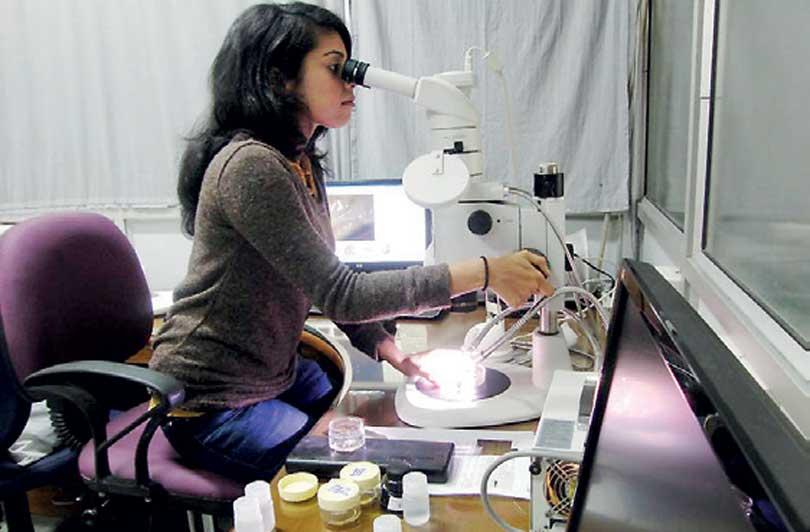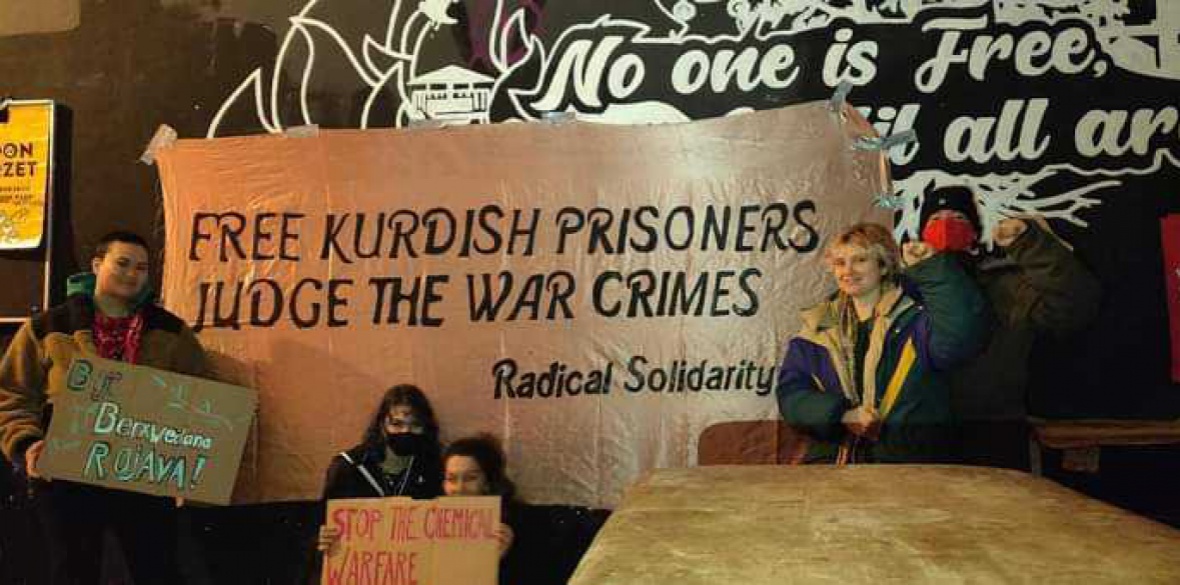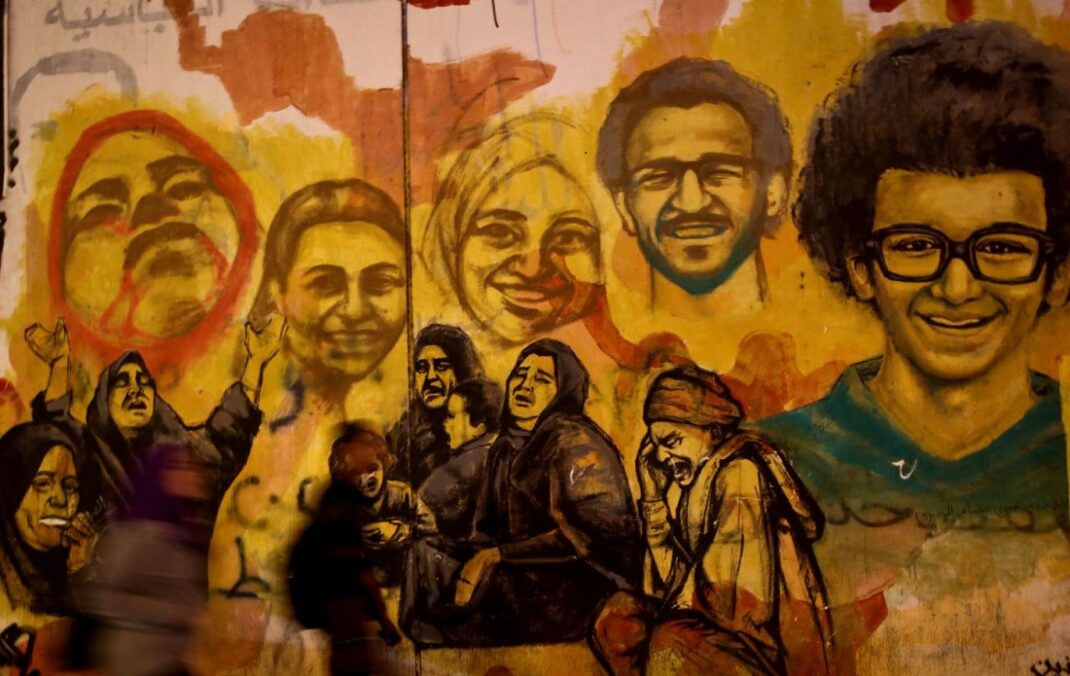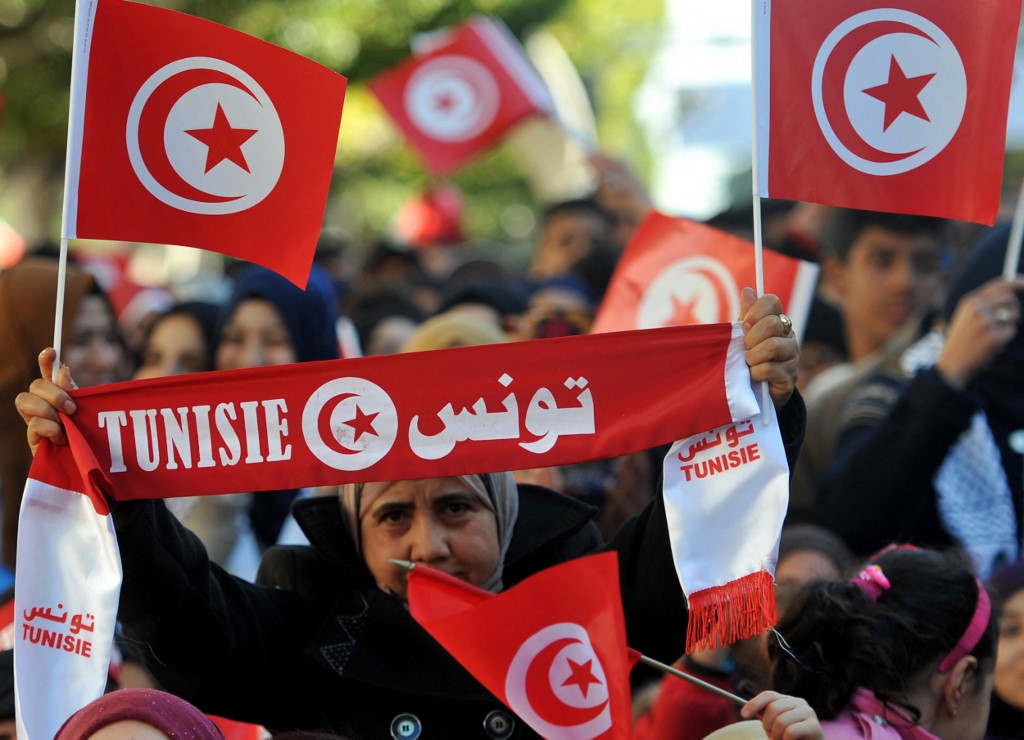Videos Show How Rioter Was Trampled in Stampede at Capitol
Rosanne Boyland died after losing consciousness in the crush of a pro-Trump mob as it surged against the police. Here’s how it happened.

By Evan Hill, Arielle Ray and Dahlia Kozlowsky
Published Jan. 15, 2021
Rosanne Boyland, a 34-year-old Trump supporter from Georgia who died during the attack on the Capitol on Jan. 6, appears to have been killed in a crush of fellow rioters during their attempt to fight through a police line, according to videos reviewed by The Times.
Though the videos have circulated widely, Ms. Boyland’s presence in them had gone unnoticed until now, and the manner of her death had previously been unclear. The videos show her body on the ground just outside a door on the Capitol’s west side that was the scene of some of the day’s worst violence.
Her clothes and backpack strap in the videos match those she was seen wearing in a picture of her taken earlier that day, and two witnesses, one of whom tried to help her, gave similar accounts of her death.

A picture of Ms. Boyland from earlier on Jan. 6 showing her clothes and backpack helped The Times identify her in the crush of the mob.Credit...Justin Winchell
Here is how the fatal rush unfolded.
Around 2:30 p.m., rioters on the west side of the Capitol forced their way through lines of Metropolitan Police officers and swarmed to a second-level promenade. There, they headed toward a door and tunnel traditionally used by presidents when they emerge for their inauguration, hoping to breach the Capitol.
As soon as the crowd entered the tunnel, they were met by a line of riot police. Even as they began to push, a rioter could be heard on video warning: “Stop pushing, somebody’s going to get hurt.”
Within half an hour, the hallway became packed with rioters. Around 2:50 p.m., an independent photojournalist, Jon Farina, entered and began filming.
The battle inside continued for another hour, as new arrivals eagerly joined the line of rioters filing into the packed hallway to replace those who were injured or tired.
Visible among these new arrivals is Ms. Boyland, identifiable in a YouTube video wearing her American flag sunglasses, packed amid the crowd surging toward the door. Justin Winchell, a friend who attended the protest with her that day, is in the crowd as well but cannot be seen in the video.
 A screengrab from a YouTube video shows Boyland inside a tightly packed crowd as it tries to breach a west-side Capitol door defended by police on the afternoon of Jan. 6.Credit...The New York Times/The Black Conservative Preacher, via YouTube
A screengrab from a YouTube video shows Boyland inside a tightly packed crowd as it tries to breach a west-side Capitol door defended by police on the afternoon of Jan. 6.Credit...The New York Times/The Black Conservative Preacher, via YouTubeAt 4:19 p.m., the mob can be seen making another push into the doorway. Less than a minute later, the police pushed back, and the mob can be seen tumbling out of the door and down the steps. Mr. Winchell, in a bright blue hooded sweatshirt, is now just visible at the top of the steps.
For the next seven minutes, he can be seen pulling people away, appearing to search for Ms. Boyland as rioters continue to tumble out of the door. There is a lull in the fighting, and the crowd chants “I can’t breathe!” — a rallying cry of Black Lives Matter protests
CreditCredit...The New York Times/Mel D. Cole
It is unclear from the videos if Ms. Boyland was alive at this time, but two rioters — one wielding a stick and the other a crutch — launched a new attack on the police at 4:27 p.m., making it virtually impossible for officers to give her aid, if they were able to notice her at all.
Boyland is visible in a video lying on her side in front of the door, her black hooded sweatshirt, arm and face partially visible, as men clash with police above her.
In the chaos, two men spotted Ms. Boyland on the ground and dragged her away from the door.
The men laid Ms. Boyland out on the steps and attempted to resuscitate her. At least two individuals can be seen on video providing CPR. At the top of the steps, another man, wearing a purple jacket, can be seen apparently negotiating with the police so that the rioters can get Ms. Boyland assistance.
Roughly two and a half minutes after she was pulled away from the door, the men carried Ms. Boyland back to the police line, even as other rioters continued to throw poles and other objects at the officers.
At least two people present during the fight at the door recounted on video how they had seen a woman being trampled in the mob.
One man, who livestreams under the name Villain Report, said in a YouTube video posted to his channel that he saw a woman collapse from asphyxiation inside the tunnel. The man said he tried to feel the woman’s pulse after she was dragged away from the door, but found nothing. A Times review of the videos confirmed that he had been among the men surrounding Boyland’s body.
“By the time that they decided to pick the person up and give them to a police officer, she had blue lips and blood was coming out of her nose,” he said on the video. “I don’t think that person will be revived.”
In another video, a rioter identified as 25-year-old Edward Jacob Lang said he also had seen a woman trampled in the tunnel.
“They killed somebody, in front of my eyes.” “Really?” “Yes, she collapsed underneath them, for four minutes she was underneath, not breathing.” “What happened, sir?” “Some — a lady died in front of me. I picked up a — I carried her down the steps. She fainted and she was crushed by about six people.” “Out here? Did she go inside?” “She was purple by the time they got her.” “Oh, my God.” “And white.”
In social media posts, Lang blamed the police for the stampede and shared images of himself participating in the fight at the door. Police and F.B.I. agents arrested Lang from his home in Newburgh, N.Y., on January 16.
According to the Metropolitan Police Department, paramedics who responded to a call regarding a medical emergency at the Capitol arrived to find two Capitol Police officers in the Rotunda performing CPR on Ms. Boyland, who the officers said had collapsed in the protest. The Metropolitan Police declined to confirm whether the woman in the videos was Ms. Boyland, but said she was pronounced dead at a local hospital at 6:09 p.m. The chief medical examiner of Washington, D.C., said Boyland’s cause and manner of death are “pending”.
Mr. Winchell did not respond to a request for comment. After this story first published, Ms. Boyland’s sister told a Times reporter via text message she was glad to have some answers, but that she is now “left with more questions,” such as why her sister had gotten so close to the violence.
The day after Ms. Boyland’s death, her brother-in-law told reporters that he held President Trump responsible.
“Rosanne was really passionate about her beliefs, like a lot of people are,” he said. “I’ve never tried to be a political person, but it’s my own personal belief that the president’s words incited a riot that killed four of his biggest fans last night.”
Nicholas Bogel-Burroughs contributed reporting. Christina Kelso contributed production.
Correction: Jan. 21, 2021
An earlier version of this article incorrectly stated the times of day when rioters at a doorway into the U.S. Capitol pushed toward and launched a new attack against the police. The times were 4:19 p.m. and 4:27 p.m., not 4:09 p.m. and 4:17 p.m.
Evan Hill is a journalist on the Visual Investigations team, which combines traditional reporting with advanced digital forensics. @evanchill
What Happened: Here’s the most complete picture to date of what happened — and why.
Timeline of Jan. 6: A presidential rally turned into a Capitol rampage in a critical two-hour time period. Here’s how.
Key Takeaways: Here are some of the major revelations from The Times’s riot footage analysis.
Death Toll: Five people died in the riot. Here’s what we know about them.
Decoding the Riot Iconography: What do the symbols, slogans and images on display during the violence really mean?
The House investigation. A select committee is scrutinizing the causes of the Jan. 6 riot at the U.S. Capitol, which occurred as Congress met to formalize Joe Biden’s election victory amid various efforts to overturn the results. Here are some people being examined by the panel:
Donald Trump. The former president’s movement and communications on Jan. 6 appear to be a focus of the inquiry. But Mr. Trump has attempted to shield his records, invoking executive privilege. The dispute is making its way through the courts.
Mark Meadows. Mr. Trump’s chief of staff, who initially provided the panel with a trove of documents that showed the extent of his role in the efforts to overturn the election, is now refusing to cooperate. The House voted to recommend holding Mr. Meadows in criminal contempt of Congress.
Scott Perry and Jim Jordan. The Republican representatives of Pennsylvania and Ohio are among a group of G.O.P. congressmen who were deeply involved in efforts to overturn the election. Mr. Perry has refused to meet with the panel.
Phil Waldron. The retired Army colonel has been under scrutiny since a 38-page PowerPoint document he circulated on Capitol Hill was turned over to the panel by Mr. Meadows. The document contained extreme plans to overturn the election.
Fox News anchors. Laura Ingraham, Sean Hannity and Brian Kilmeade texted Mr. Meadows during the Jan. 6 riot urging him to persuade Mr. Trump to make an effort to stop it. The texts were part of the material that Mr. Meadows had turned over to the panel.
Steve Bannon. The former Trump aide has been charged with contempt of Congress for refusing to comply with a subpoena, claiming protection under executive privilege even though he was an outside adviser. His trial is scheduled for next summer.
Michael Flynn. Mr. Trump’s former national security adviser attended an Oval Office meeting on Dec. 18 in which participants discussed seizing voting machines and invoking certain national security emergency powers. Mr. Flynn has filed a lawsuit to block the panel’s subpoenas.
Jeffrey Clark. The little-known official repeatedly pushed his colleagues at the Justice Department to help Mr. Trump undo his loss. The panel has recommended that Mr. Clark be held in criminal contempt of Congress for refusing to cooperate.
John Eastman. The lawyer has been the subject of intense scrutiny since writing a memo that laid out how Mr. Trump could stay in power. Mr. Eastman was present at a meeting of Trump allies at the Willard Hotel that has become a prime focus of the panel.

 Sri Lankan born young scientist Dr. Gayani Senevirathne, who has excelled in the fields of Zoology and Molecular Biology brought pride to the country, since her latest research on finding an answer to a human abnormality had gained attention in the United States.
Sri Lankan born young scientist Dr. Gayani Senevirathne, who has excelled in the fields of Zoology and Molecular Biology brought pride to the country, since her latest research on finding an answer to a human abnormality had gained attention in the United States.











